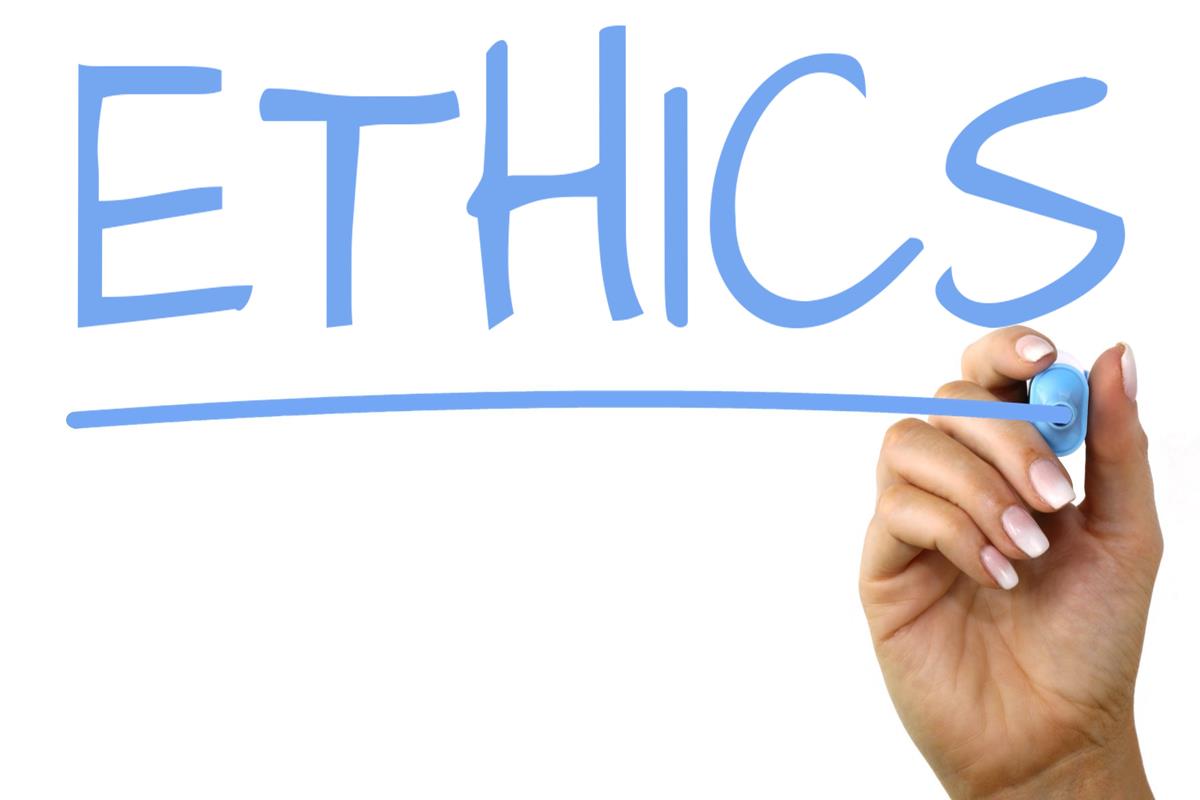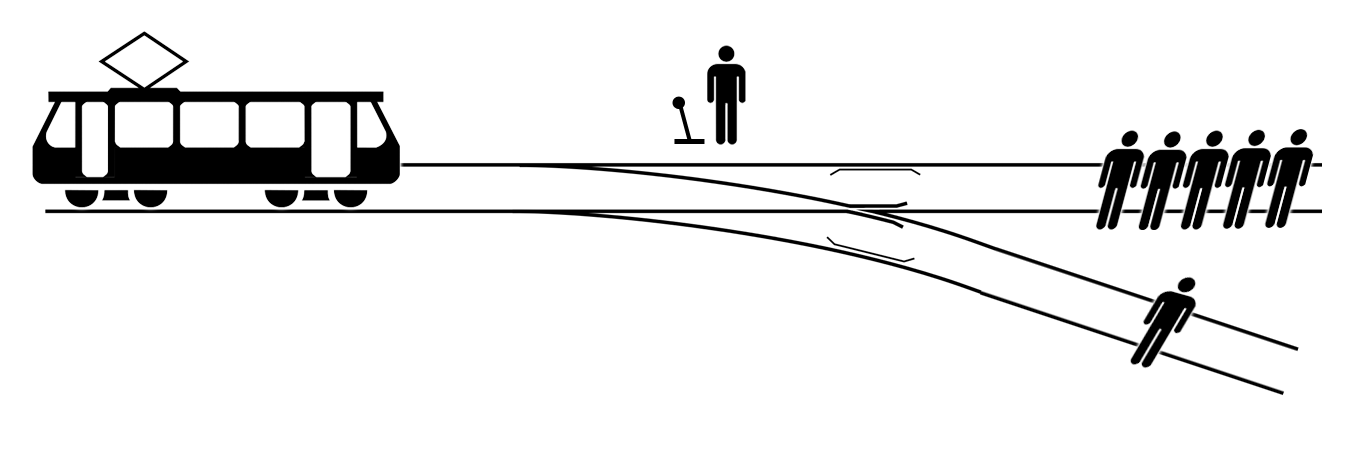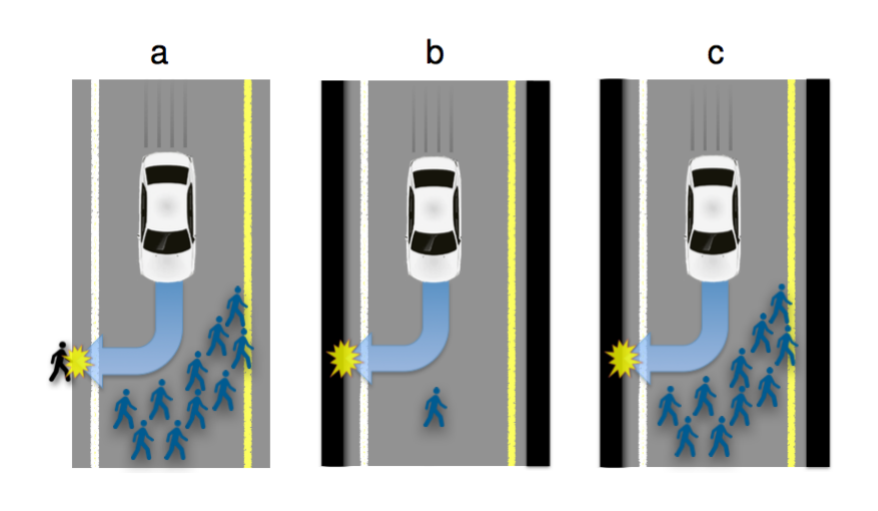Ethical Would You Rather...
25 Apr 2020
The Moral Dilemma
Imagine this: You are at a restaurant and you notice your friend’s wife on what seems like a date. Should you tell your friend and possibly ruin his marriage? Should you turn a blind eye?
In Schrodinger’s cat thought experiment, it is equally possible that the cat is alive and deceased while it is in the box, but when you open the box, you kill the cat by solidifying the truth. Following the same logic, since you don’t know if your friend’s wife is being unfaithful or not, you may “kill the cat” by telling your friend. But what if not telling your friend leads to a worse heartache down the line? Perhaps there is hubris in the idea that something does not exist if you don’t profess it.
Nevertheless, this is a very sticky moral dilemma; there are pros and cons for each choice. The choice and reasoning you ultimately decide on demonstrates your sense of ethics. If you follow the Association for Computing Machinery Code of Ethics, you may decide to tell your friend because you value honesty and trustworthiness. If you are a moral realist that believes there are moral facts, any moral proposition is either true or false. The universal modus ponens rule of inference can be used to demonstrate the proposition below
- Lying is wrong.
- If you omit the truth, then you are lying.
- Therefore;
- Omitting the truth is wrong.
The Ethical Software Engineer
I would argue that being ethical and following morals is important in nearly all decisions a person will have to make, but personal ethics are highly subjective. So, a universal code of ethics must be used professionally, and in software engineering this is the Software Engineering Code of Ethics and Professional Practice. This isn’t necessarily a set of commandments, rather it is more so a guide to help you make ethical professional decisions. Ethics are moral principles that govern a person’s behavior or the conduct of an activity. Some moral principles of an ethical software engineer are to never advertently or inadvertently cause harm to the public, their clients, colleagues, and employers, and always create products of the best possible standards. This code of ethics was created for software engineers, but it can be used in other situations in your life as well; as was demonstrated in the thought experiment above.
Ethical Analysis of a Hypothetical Situation
For the sake of this analysis, I am a software engineer on a team that is tasked with developing the navigation algorithm for a self-driving car, and I want to follow the standards of the ACM Code and the SE Code. First, I consider all the possible negative impacts of my computing. My navigation algorithm will take in a lot of sensitive data; photographs and videos may contain sensitive information of bystanders or my client, and location information of the car may reveal my clients’ “usual” routes. If my navigation algorithm is accessed by an unauthorized third party, they could potentially take control of the vehicle and cause a great deal of unjust harm to my client, the public, and property. A vehicle can be a destructive weapon in the wrong hands, and therefore must be extremely secure. To minimize death or injury in an unavoidable accident, I must follow the generally accepted best practices, unless there is a compelling ethical reason to change it.
What would I do?
My personal opinion as to the ethical stance to be taken is a bit complicated. Storing the sensitive data would be necessary, that data could be used to assist the passenger, and improve the safety and efficiency of the algorithm. As long as the correct precautions are implemented to maintain complete confidentiality of all sensitive data, and only collect the minimum amount of personal information necessary, I would be respecting privacy and maintaining morality.
The Options in the Unavoidable Accident
 There is no “right” answer for the question of handling an unavoidable accident.
Vehicles are often marketed by how safe they keep the people inside the vehicle, not how little
damage they will do to people outside of the vehicle. But thankfully it is not my job to market the vehicle in this hypothetical. The Trolley Problem thought experiment models a very similar ethical dilemma as the vehicle model. In the Trolley Problem, there are two options, you either interfere or don’t interfere. According to the Utilitarian view you must interfere to save the five people, it is not only obligatory but the most moral option. On the other hand, the deontological ethics is of the view that action itself must be judged based on being right or wrong alone, without consideration for consequences, so if you interfere you caused the man to die.
There is no “right” answer for the question of handling an unavoidable accident.
Vehicles are often marketed by how safe they keep the people inside the vehicle, not how little
damage they will do to people outside of the vehicle. But thankfully it is not my job to market the vehicle in this hypothetical. The Trolley Problem thought experiment models a very similar ethical dilemma as the vehicle model. In the Trolley Problem, there are two options, you either interfere or don’t interfere. According to the Utilitarian view you must interfere to save the five people, it is not only obligatory but the most moral option. On the other hand, the deontological ethics is of the view that action itself must be judged based on being right or wrong alone, without consideration for consequences, so if you interfere you caused the man to die.
The Most Ethical Choice
 The algorithm created by my team must make a decision and I believe the most ethical decision is to cause the least amount of harm possible, even if this means killing the passenger. The vehicle can be made as safe as possible to protect the passenger, but pedestrians and bystanders have nothing to protect them. The Utilitarian view is also implemented by other AV, so it seems to be the generally accepted best method. There is an idea stated in this study that the public participates in a survey and the method most favored by the public is the one that will be implemented. I think this is an ethical choice as it acknowledges that the people are all stakeholders in computing, but to be perfected it must take the needs of the less privileged into account. The idea that the vehicle makes a different decision based on whether a passenger is young or old is EXTREMELY unethical, it is discriminatory and it implies some lives are worth more than others.
The algorithm created by my team must make a decision and I believe the most ethical decision is to cause the least amount of harm possible, even if this means killing the passenger. The vehicle can be made as safe as possible to protect the passenger, but pedestrians and bystanders have nothing to protect them. The Utilitarian view is also implemented by other AV, so it seems to be the generally accepted best method. There is an idea stated in this study that the public participates in a survey and the method most favored by the public is the one that will be implemented. I think this is an ethical choice as it acknowledges that the people are all stakeholders in computing, but to be perfected it must take the needs of the less privileged into account. The idea that the vehicle makes a different decision based on whether a passenger is young or old is EXTREMELY unethical, it is discriminatory and it implies some lives are worth more than others.